INFLATABLE BOAT BUYERS GUIDE
INTRODUCTION:
Inflatable boats, or inflatable tenders are a common sight at nearly every marina. Tied to a cleat, lazily bouncing against the dock with each passing wake, their so common they almost blend into the setting. Inflatable boats, (often referred to as a “zodiac boat” because of the ubiquity of the original French military manufacturer that popularized the design shape), have become increasingly popular over the past few decades.
"because they’re filled with air, inflatable boats are the most seaworthy craft of their size."
This explosion in popularity is due to several factors, some inherent advantages of an inflatable, it deflates allowing for storage in small spaces, it can be tied against a ship without marking or damaging it, and because they’re filled with air, inflatable boats are the most seaworthy craft of their size. Inflatables can hold up to 10x their own weight, can float if one of their tubes deflates, are inherently stable, and offer on the water performance to meet nearly anyone’s needs. Another reason for their popularity is the cost of materials and manufacturing inflatable boats has decreased, greatly reducing the investment needed to obtain and maintain one of these zodiac style boats.
"Zodiac style inflatable boats offer the best compromise between storage, price, durability, load capacity, capability, weight, and performance of nearly any boat on the market."
The two best days of a man’s life are the day he buys his boat and the day he sells it, except with an inflatable! Space availability and convenience are two important considerations when purchasing any boat, both of which are solved with an inflatable. Zodiac style inflatable boats offer the best compromise between storage, price, durability, load capacity, capability, weight, and performance of nearly any boat on the market. Inflatable boats are relatively light compared to other boats which make them portable and easy to store. This makes them a great fit for any lifestyle ranging from the weekend warrior living in an apartment to the world traveler that lives on their sailboat where space is at a premium. When properly maintained, these boats can last up to 10 years, or even more with the right care and protection. All of these attributes combine to create a capable boat that anyone can use and love.
Overview:
While inflatable boats are extremely versatile, there are many different types of inflatables to fit specific needs of individuals and use applications. Inflatables can be used as anything from a yacht tender for a sailboat to fishing boats for apartment dwellers, and nearly anything in between. The inflatable boat market is constantly growing and evolving, making it difficult to keep up with new technologies and products. In this article we aim to guide beginners and even experienced boaters about the ins and outs of inflatable boats.
This article details the different types of inflatable boat styles on the market, how they are designed and made, their individual strengths and weaknesses, and what type of application they can be best utilized. This guide will help you narrow down which type of inflatable zodiac boat is best for your needs, what motors options to consider, and various use applications. Finally, this article will cover the different materials inflatable boats can be manufactured from, the various construction methods used, and the different designs of inflatable boats to help you understand how each part plays a role in getting you the best boating experience possible.
Types Of Inflatables:
There are many ways in which we could categorize inflatables, most of which will be covered in this article. One common way to distinguish differences between competing technologies is the floor material used in the boat.

Roll-Up Floor
The first type of floor material we will cover is the most basic, the roll-up floor. Roll-up or slat floor inflatables often lack a keel, and are offered in a large range of different sizes, quality, and materials. These inflatables are typically less expensive compared to more advanced inflatables, their roll up floors are convenient for storage, but lack durability and rigidity. Roll-up floors comprise a series of lateral slats with gaps in between, this makes it difficult for passengers to move around, and makes the floor susceptible to damage. Major brands that manufacture these types of boats are Achilles, and West Marine.
These boats are used for their portability and ease of setup. They are designed to be rolled up, easily carried and stored in small spaces. Roll up floor boats work for short, ship to shore trips, but are limiting when needed for longer excursions. If broken, the slatted floors can quickly damage the fabric, making areas of these boats less durable and prone to tears or leaks. These inflatable boats are designed to be easy to assemble and inflate. However, with simplicity being the primary focus, performance is lost.
"Roll-up floors comprise a series of lateral slats with gaps in between, this makes it difficult for passengers to move around, and makes the floor susceptible to damage."
These boats often lack a keel which leads to issues with directional stability when on the water, especially when navigating choppy and rough waters, or when turning. These floors are too weak to support a keel, and generally lack the ability to get on plane, greatly limiting the speed one can achieve with this type of boat.
Roll-up boats come in many different shapes, sizes and price points. The smallest roll-up inflatable without a keel is a 4.8’ long and cost about $12-30 from Intex; this inflatable can only hold one small child and is powered by oars. One of the larger roll-up inflatable without a keel is the LS4-RU by Achilles. It is 8’8” long and costs $1,300-1400, this inflatable can hold a maximum of 4 people and can be powered by gas or electric outboard.

Hard Floor
Hard floor inflatables are one of the most popular inflatable floor choices, they offer greater durability than any roll up, but with improved performance. This performance leap is thanks to their V-shaped keel and heavier duty hard floor pieces made of aluminum or wood. The main brands which make boats in this category are Achilles, Zodiac, Newport Vessels, Se Eagle, Mercury, and West Marine. Newport Vessels offers a complete range of hard floor models ranging from the 8’10” Dana inflatable dinghy, to the 12’6” Catalina.
The hard floor provides stability thanks to the lower center of gravity, provides support for the keel, creating a better hull shape, which results in the best stability at speed among inflatable boats. This allows the boat to handle rough waters, big waves, other boat wakes and high speeds with confidence and stability.
Hard floor boats are built to be durable and are usually made of higher quality materials, generally PVC or CSM (Hypalon), although sometimes TPU is used. The increase in quality and durability also comes with an increase in price. These inflatables are still simple to assemble and deflate but do require a bit more time and effort; an individual user familiar with setup can usually set up one of these alone in about 10-15 minutes or less, depending on the pump, and ease of floor installation. Hard floors provide excellent structural support for inflatables, they act as the backbone of the boat and need to be assembled into the boat before the keel and hull is fully inflated. These extra steps can add an additional 5 minutes for a total assembly time compared to air floors or slat floors. For a total assembly of about 10-15 minutes, the benefits far outweigh the additional time required for setup. With hard floors, you are able to reach higher speeds, have greater stability, and better handle large waves and wakes. One important consideration when making a purchasing decision is the increase in weight that comes with a hard floor. A hard floor boat will weigh around 15-25% more than the equivalent air floor or roll up. The exact weight increase will vary depending on the overall size of the boat, the type of floor material used, and the total number of floor pieces. Aluminum will offer some weight savings but can be dented and damaged more easily, wood will be heavier, but offers the best durability.
"Hard floor inflatables are one of the most popular inflatable floor choices, they offer greater durability than any roll up, but with improved performance."
The size range for this category is large as well, with models ranging from 7ft all the way to 23ft long. The smallest hard floor boat is made by Mercury. The Mercury 240 is 7’3” and can hold a maximum of 3 people, this PVC boat runs between $900-1000. The largest boat is the Zodiac Mil-Pro Heavy Duty Series. This boat is 23’ long and made of Hypalon, it has a 20 person capacity and costs over $34,000.
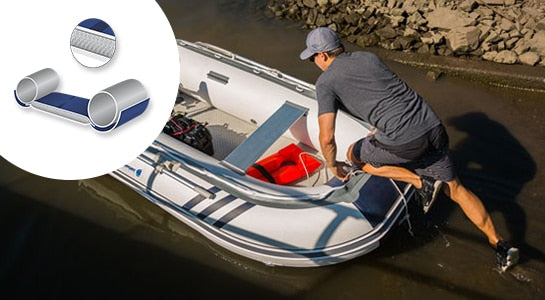
Air Floor
Air floors have increased in popularity in recent years with the development of drop stitch fabrics. Previously, air floors featured an inflated bladder floor known as I-Beam construction, these floors are more susceptible to punctures and offer less rigidity than more advanced drop stitch floors. Drop stitch floors offer a user friendly mix of quality, durability, and portability in all one package. Air floors are very light and easily roll up for storage. The air floor makes these boats lighter while offering a comparable level of performance to their hard floor counterparts. Major brands that sell air floor inflatables will be Achilles, Zodiac, Newport Vessels, Mercury, Sea Eagle, and West Marine. Newport Vessels offers three air floor models, the 7’7” Carmel, the 9’ Seascape, and 10’ Santa Cruz. Not all air floors are created equal however, drop stitch fabrics are a new technology which has not been universally adopted by inflatable manufacturers. Some manufacturers still use a traditional bladder style air floor, which provides little structural support for the hull. These models do not perform as well as drop stitch floor boats, and are easily susceptible to puncture and abrasion.
"Air floors have increased in popularity in recent years with the development of drop stitch fabrics. "
Air floors are nearly as versatile as hard floors and can be used for many of the same applications, however they do have some limitations. As I-Beam air floors are outdated and only offered by a few manufacturers, we will mostly focus on higher quality drop stitch floors. Drop stitch floors are designed to hold high-pressures, often inflated to 8-12 psi; this makes air floors nearly as firm as a hard floors, while saving weight and storage space. This makes these inflatables extremely portable when transporting and easily storable in tight spaces. Air floor inflatables also provide great performance in the water, their inflatable keel gives them directional stability and the ability to quickly get on plane. They do, however, fall short of hard floors when it comes to handling rough water; due to their reduced weight and higher center of gravity, they can feel less stable at higher speeds. While the high-pressure air floor is extremely stiff, it cannot keep the boat completely rigid and allows some flex. For this reason, they are not the ideal boat for speed addicts or frequently traveling in rough waters.
"Air floors are nearly as versatile as hard floors and can be used for many of the same applications"
Boats in this subcategory are generally built to the same standard as hard floor models, they are made from PVC or Hypalon, using similar construction techniques. Because these boats have a one piece air floor, the setup and teardown time is reduced, they can generally be setup in less than 10 minutes. These mildly cushioned floors offer more comfort for passengers, particularly for knees and feet when moving about the boat. If kids are sitting or kneeling on the floor while riding in rough water, an air floor might be a more comfortable option for your family. Boats with air floors are not ideal if you are handling sharp or rugged items. These floors are made of PVC fabric and can be punctured or experience chafing and abrasion that can eventually damage the floor. Drop stitch floors have a shorter lifespan than hard floors, and bladder air floors offer minimal durability, however replacements can be purchased from reputable manufacturers, contact us directly if your Newport Vessels drop stitch floor needs replacing. If the floor is damaged past the point of repair, purchasing a new one can be more expensive than hard floors. Depending on the environment you will be using your boat, the air floor can be affected by the temperature, if placed in cold water, the air in the floor will condense and soften the floor. Air floors may also need to be topped off when the weather changes during use. Although this shouldn’t be a dealbreaker, it is something to keep in mind when choosing the right inflatable for your specific use.
The size range on air floors is more narrow than hard floors, because air floors have some flexibility, the length at which they can be effective is limited. These designs vary from 6’7” up to 14’9”, both extremes are made by Zodiac. At 6’7” the Cadet C200 AERO can hold 2 persons and costs between $1100-1300. The Zodiac MK III Futura FR is 14’9” and can hold 8 persons, it retails for around $6000.

RIBs
When searching for inflatable boats, it is common to see the abbreviation RIB; RIB stands for Rigid Inflatable Boat. These boats differ from the above inflatables in that they possess solid contoured hulls, making them a mated combination of an inflatable and a traditional fiberglass boat. This adds extra weight to the boat but allows superior performance in the water. Major brands that manufacture these boats are Zodiac, Achilles, Defender, Avon, and AB Inflatables. RIBs are often made with a deep-V hull which gives them great performance on the water, they quickly get on plane, and cut through chop and waves with ease. Having this style of hull also increases the top speed which makes them extremely fast. They still have tubes on the topside for increased buoyancy and the renowned stability that inflatable boats offer. Their hulls can be constructed from various materials like fiberglass, aluminum, or even polyester.
This allows them to be used in numerous applications, including commercial or charter fishing operations, Coast Guard operations, and more. However, with an increase in performance, comes a big loss in portability and a significant increase in price.
With a solid hull construction, the overall weight of the boat is increased and the ability to roll up and store the “inflatable” is lost. This restricts the options for transport to a trailer and requires a large storage space. RIBs start at around $1,500 and can cost upwards of $30,000 depending on the size and material used.
RIBs can range from 7’10 to all the way to 41’ in the commercial sector. One of the smallest RIBs on the market is the Achilles HB-240 Al at 7’10”; this boat is made with a fiberglass hull and sells for $2400-2500. The longest bare RIB without outfittings, is the Defender RIB 460 at 15’1”; this boat is made with a fiberglass hull and sells for around $7500.

Console RIBs
Console RIBs are Rigid Inflatable Boats that have been rigged or outfitted to incorporate a fixed steering console, usually located in the center or rear of the boat. Console RIB manufacturers offer a complete range of outfittings, the most minimal designs only have a steering wheel and throttle attached to the console. While luxury RIB manufacturers offer boats complete with vinyl clad seating, inboard jet engines, sound systems, and more.
These console RIBs are designed with the pilot of the vessel in mind, having steering and throttle controls on a console makes it much easier to operate and steer the craft at high speeds. The larger the RIB is, the heavier it will be and the larger engine it will require to power the boat. These fiberglass inflatable hybrids offer high performance in the water while remaining fairly light compared to speed boats and other watercraft. This makes them ideal choices in the commercial industry for fishing boats, military applications, scientific research applications, and luxury superyacht tenders.
There are many drawbacks to this type of setup however, having a console takes up a lot of space on the RIB, adds weight and moving parts that can break and require expensive specialized repairs. Something as simple as a broken or damaged steering cable can potentially leave you stranded, making cost of ownership for RIBs significantly higher than their fully inflatable counterparts. The steering wheel can also reduce visibility and effect your ability to maneuver your dinghy in tight spaces at slower speeds. Lastly, these setups can become very expensive, starting at around $9,000 and reaching well over $75,000! They range in sizes from 8’ to 24’ for private purchase and even larger for commercial use. Luxury console RIBs often use jet powered inboards and can run upwards of $100,000.
Inflatable Sports Boat Design

Boats with Keels
"Having a keel significantly increases a boats performance, versatility, and value; roll up floor boats without a keel offer poor performance, and are little more than an inflatable barge."
Having a keel significantly increases a boats performance, versatility, and value; roll up floor boats without a keel offer poor performance, and are little more than an inflatable barge. A keel allows the inflatable to easily get on plane, offering greater performance on the water, this performance is unrivaled by a Soft Tail or Roll-up inflatable without a keel. Keels allow a boat to get on a plane, cut through water, and offer great handling with stable turning performance. This is essential for anyone traveling in the open ocean, getting from point A to point B as quickly as possible, or anyone that is looking for enhanced performance from their inflatable. This can range from individuals using it as a tender to a family taking a quick excursion. They are typically found on inflatable tenders and RIBs, offering the exceptional performance expected from inflatable boats.

Boats without keels
Boats without without keels focus on the simplicity of inflation and storage. Inflation and deflation time along with initial cost might be reduced without a keel, at the cost of performance and speed. You won’t have to spend extra time inflating and deflating that air keel chamber when you are getting ready to use the inflatable, or when you are finished and ready to pack it up. This makes the process of going from land to water faster, but much slower once you are on the water. While quick setup is a benefit, there are more disadvantages to these lower end inflatables. Without the ability to get on a plane or ride through chop as easily, your range and speed are very limited. These inflatables can still be a useful and worth purchasing for applications involving short, ship to shore trips on flat water, but often leave users wanting more.
Hull Shapes

Flat Hull
There are a couple of different hull shapes available for inflatables on the market today. They range from flat hulls, V-hulls, and Deep-V hulls. Each of them designed with a different function and utility in mind.
"These can be made from either PVC or CSM, although with a lower price point, their performance is underwhelming."
Flat hulls are inflatables that don’t have a keel. These can be made from either PVC or CSM, although with a lower price point, their performance is underwhelming. Without a keel, these inflatables lack directional stability, the ability to get up on a plane to reach higher speeds and the capability to cut through rough water. Boats with flat hulls are not recommended for open ocean travels, and cannot reach higher speeds. These types of hulls are ideal for traveling short distances at lower speeds, they are a great inflatable used for tendering short distances, or short fishing trips on flat water.

V-Hull
V-hull inflatables are boats constructed out of PVC or CSM with an inflatable keel. These boats have a high pressure air or hardwood floor to help the high pressure keel cut through the water. With an inflatable V-hull, these boats are able to get on a plane with increased top speeds, directional stability and they can cut through wakes and waves more easily than flat hulls. While they have this additional performance, boats with these hulls are still exceptionally stable. V-hull boats are more expensive than those without a keel, but for good reason, they offer exceptional performance while maintaining a bargain price. These qualities make these hulls a great choice for many applications, they can be used as tenders, family runabouts, fishermen, divers, crabbers, wildlife photographers and more. Whatever the application, a V-hull design will not leave you wanting for more performance, and offer the best compromise in cost, performance, and size. These are the most common hulls seen on inflatables, and are used on all Newport Vessels boats.

Deep V-Hull
Deep-V hulls are found on RIBs and can be designed from aluminum or fiberglass. These will be the most expensive types of hulls. However, these hull types are able to extend farther into the water than an inflatable keel. This will add extra control, stability and be able to cut through waves like a knife.
Deep-V hulls made from aluminum will be lighter, more durable and easier to repair than fiberglass. However, fiberglass are considered more stable than aluminum hulls. Fiberglass hulls can become very expensive and if they become damaged, can be difficult to fix. Due to the deep-V hull design, these boats will sit up higher on the water. This makes them less stable and more susceptible to rocking or tilting if there is wind. This is the ideal hull for the individual looking to get the most performance without leaving the inflatable category.
Hull Shapes

Tube size can be important depending on what you plan to use your inflatable for. The smaller diameter of the tubes, the less capacity and stability the boat will have, while larger size tubes have increased capacity and are more stable. With inflatables, this is a big deal if you have children on the boat, or if you need a boat that will be performing out in the open ocean. Traveling at high speeds and through rough waters, smaller tubes make for a less comfortable ride, and have more bow spray. Overall stability and buoyancy are decreased, leading to a rough and bumpy ride. Larger tube diameter creates a comfortable and safe ride for the driver and passengers.
Tubes with a larger diameter offer superior performance in any setting, but price also increases with this heightened safety and comfort. Large tubes can be useful and advantageous in almost any circumstance; they are better to have with your boat than wishing you had them. The only negative aspects that larger tubes bring are an increase in price and less internal space in the inflatable. If you need extra space within the boat, you will be more limited in how much you can fit. However, if you have heavier items that you need to tender or take with you on your trip, the extra buoyancy that the tubes provide make for an ideal choice.
"The smaller diameter of the tubes, the less capacity and stability the boat will have, while larger size tubes have increased capacity and are more stable."

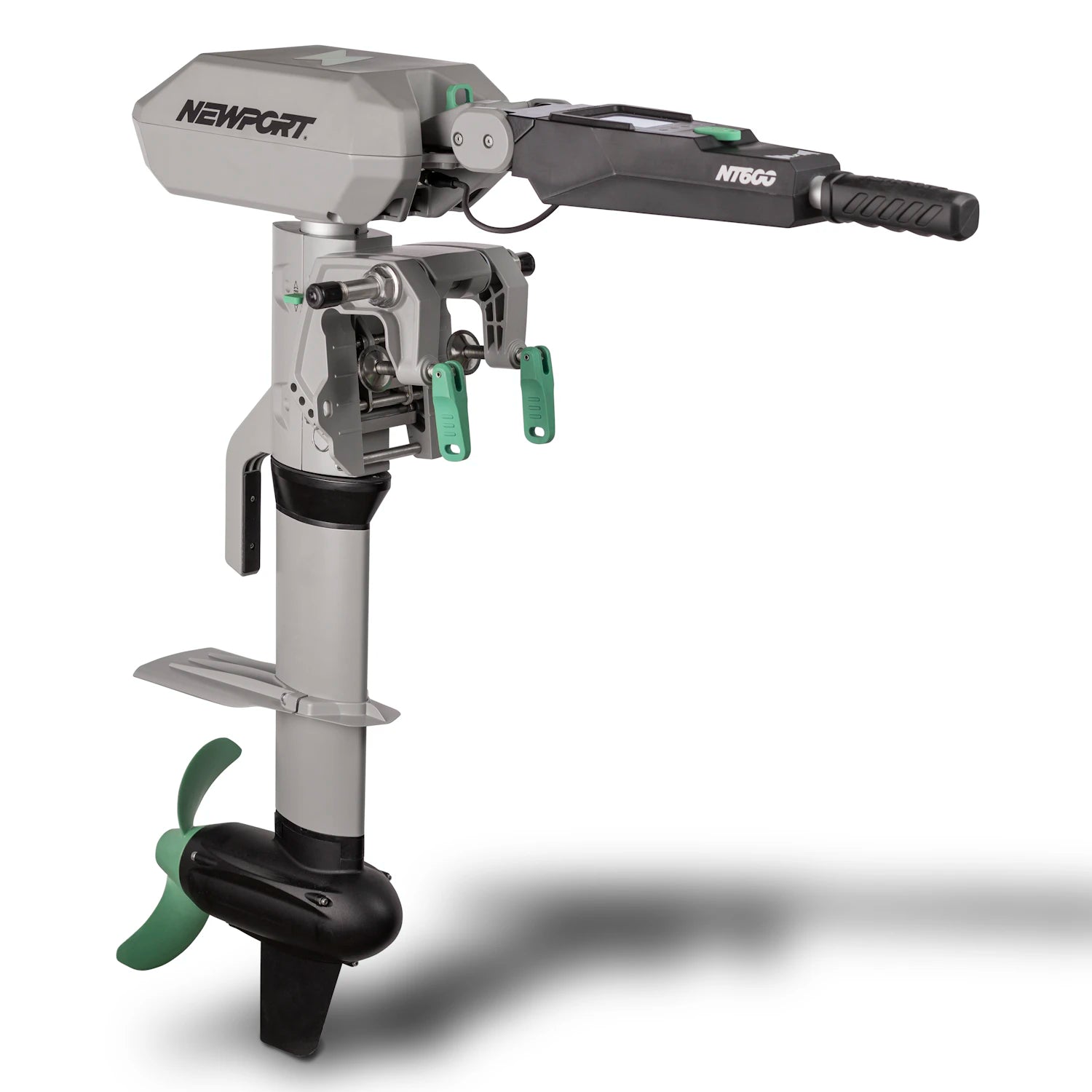
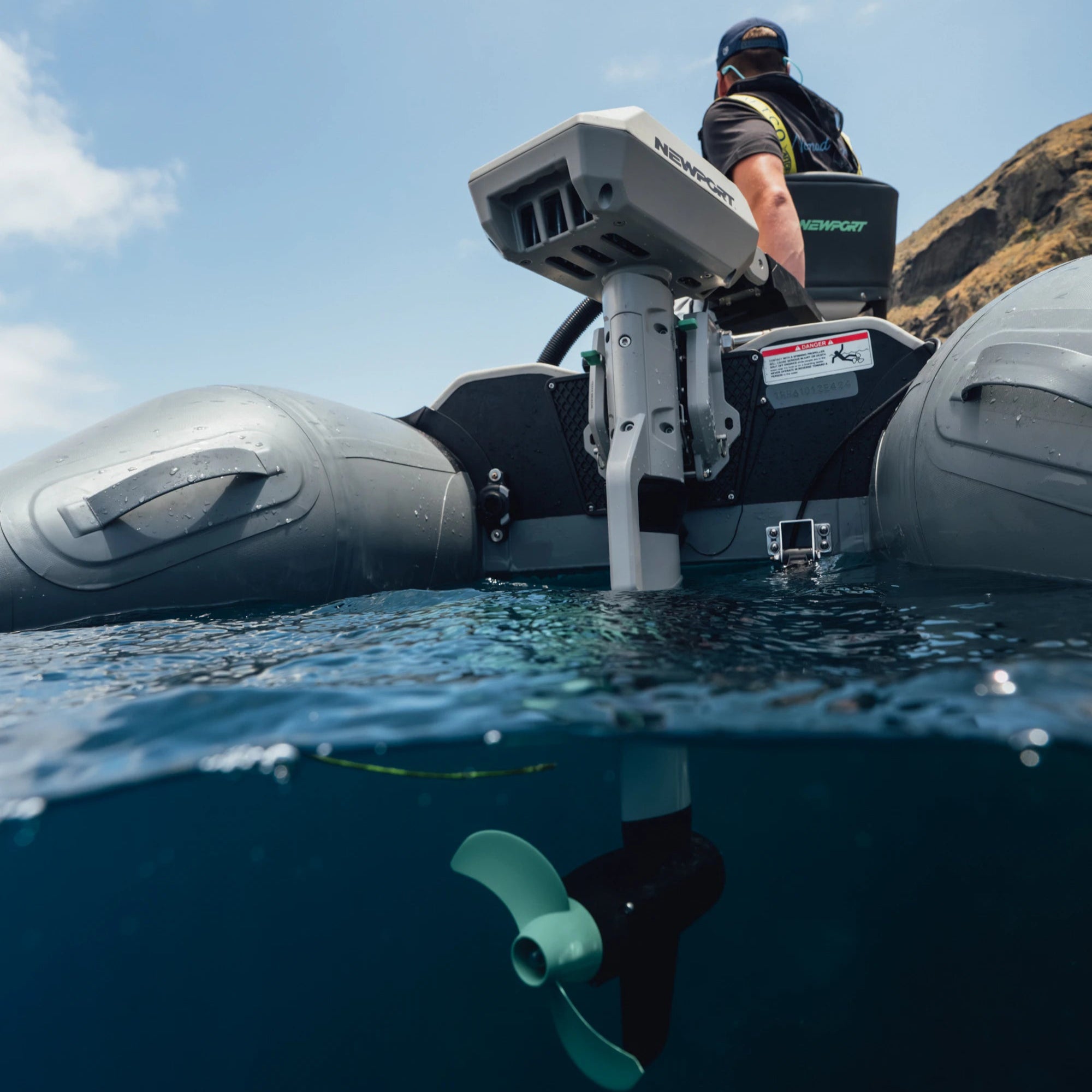
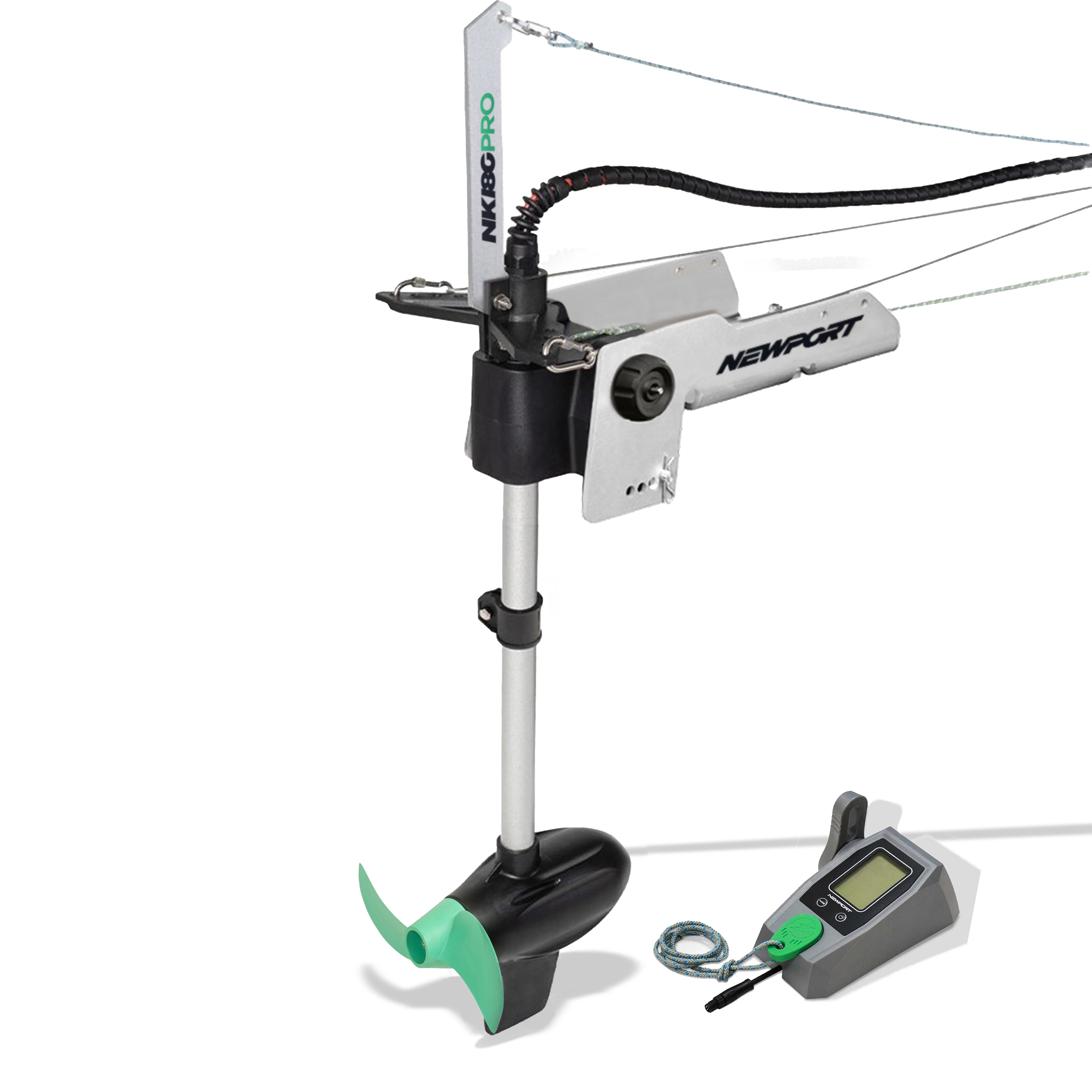
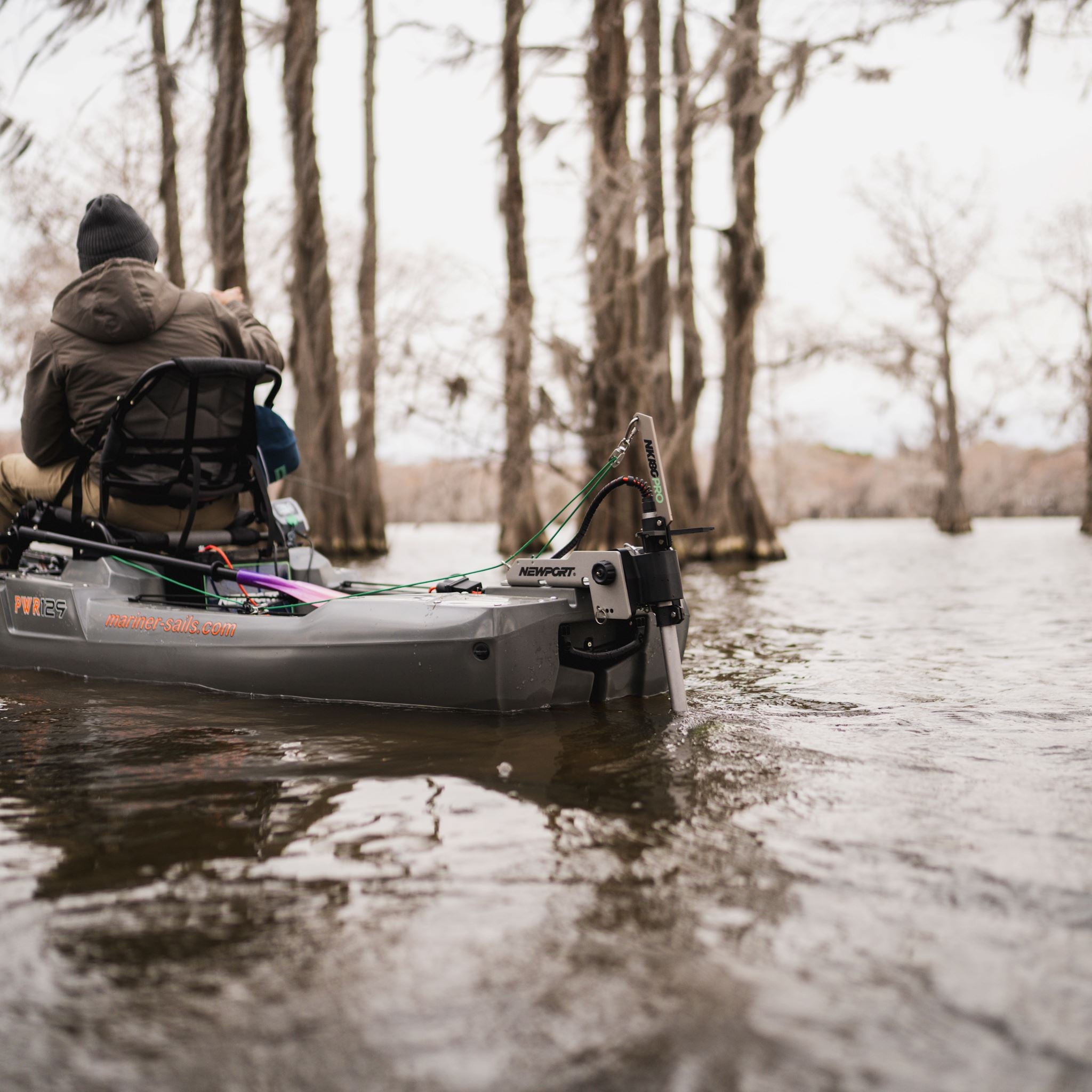
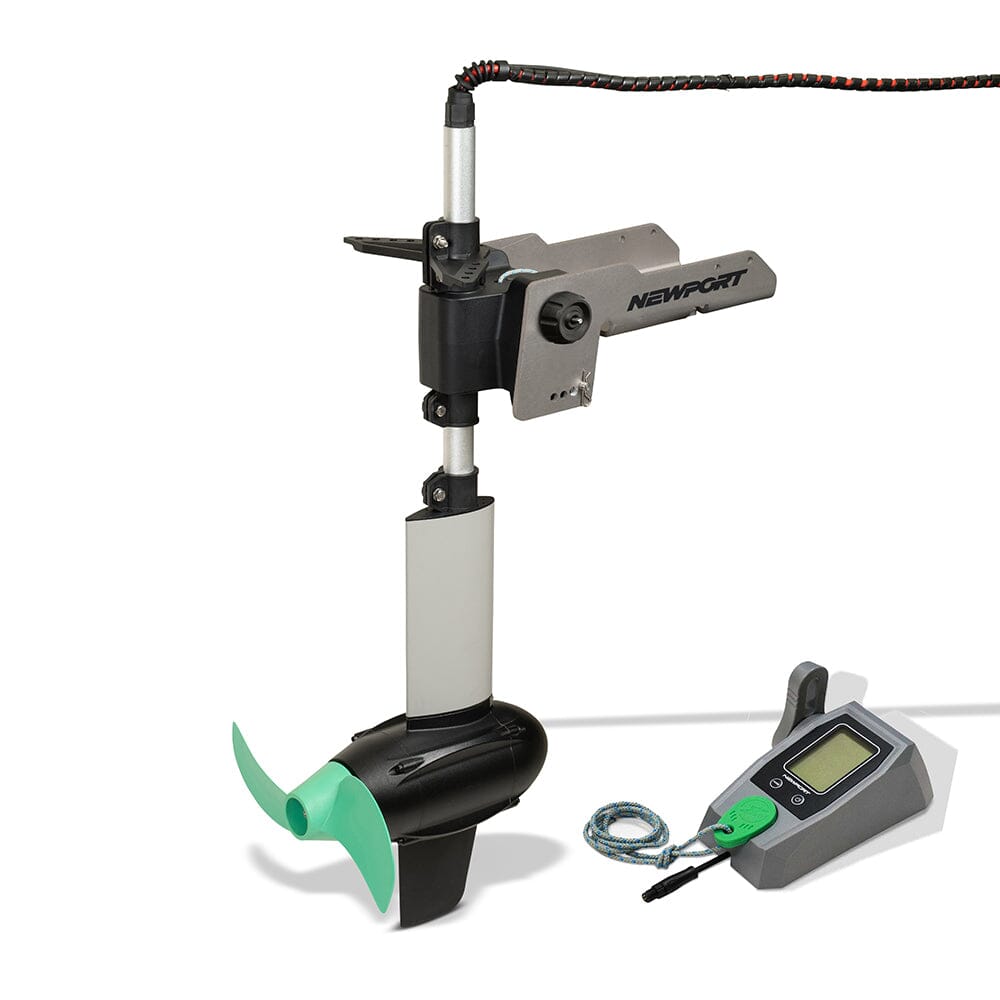






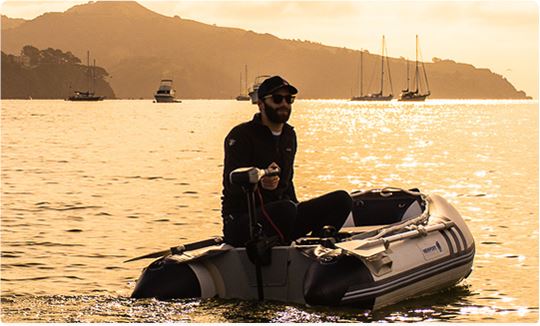
 TYPES AND DESIGN
TYPES AND DESIGN